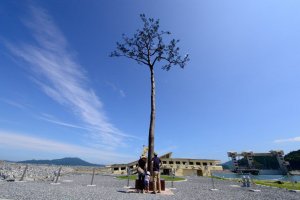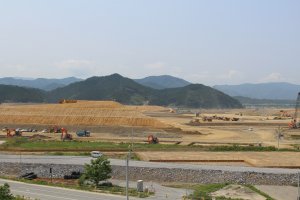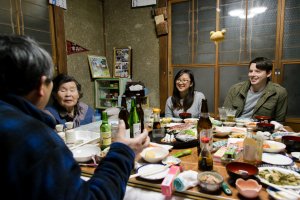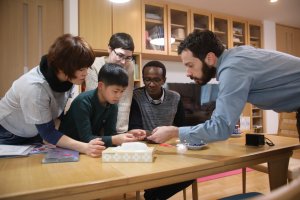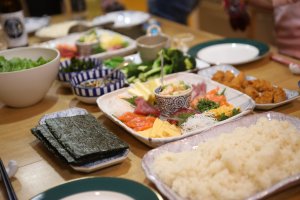Rikuzentakata (陸前高田) is a coastal city in southern Iwate Prefecture, along Japan's Pacific coastline. The area is known for a number of popular attractions, but since the 2011 earthquake and tsunami Rikentakata is also known as a region that has faced incredible challenges and persevered. Rikuzentakata has become a symbol of recovery in Japan with its efforts of rebuilding the once beautiful coastline.
Not everything is focused on recovery, and the areas just off the coastline have wonderful opportunities for visitors to stay with locals and experience rural life in Japan first-hand. This is a unique experience to view firsthand the amazing recovery efforts while connecting with the local community through unforgettable home stay experiences.
A symbol of perseverance
Rikuzentakata was one of the cities hardest hit by the 2011 tsunami. Waves reaching as high as 15 meters overtook the entire city in minutes, sweeping away buildings, homes and schools. Even today, the coastline and city center remain primarily empty.
A lone pine tree over 200 years old stood defiantly on the beach alone – the sole survivor from a grove of hundreds that once filled the coastline. This "Miracle Pine," was one of very few symbols of hope as locals walked aimlessly in the aftermath and rummaged through the debris that once their lives. Sadly, the tree perished in the following years due to salt toxicity of the land, but a park remains where visitors can view a replica of the 27-meter-tall testament to survival.
There has likely never been a better case study to the enormous re-building efforts that follow a disaster of this magnitude. The amount of construction through the area is a modern marvel and the collaboration between locals, government and private organizations volunteering their time and service is a wonder to behold. The entire region has become an enormous construction site with thousands focused on rebuilding their city.
Visitors from around the world come to walk the area on foot and see the before and after images found in the tourist center. Locals who lived through the experience offer additional context as storytellers of the tragedy. Many of these stories, however, are incredibly positive and focus on the strength of collaboration and support this community experienced from around Japan and the world.
An experience to remember
After the disaster, thousands were displaced with nowhere to go. Neighbors in the surrounding area opened up their homes to the stranded survivors as they attempted to find a way to rebuild their lives. The hospitality shown during the hardest of times continues on today as the area is now famous for an abundance of minpaku (homestay) opportunities for travelers who wish to visit the area.

Home stay in Japan is always a wonderful opportunity for exchange of culture and language. I stayed in one such home myself and had an amazing experience. The mother showed us around the house filled traditional Japanese decor, tatami mats, and shrine area in the living room. As we arrived in the evening, futons were already laid out for us but first came dinner, drinks and conversation. Japanese language ability is strong advantage in getting the most out the experience. The next day we awoke and went outdoors, where the father showed me around his fields explaining to me in great detail how he managed the area, what plants and vegetables he was growing and how his own house and family are able to support themselves through hard work. I clearly remember one experience where he jumped into the knee-high water in the rice paddies and came back with a few frogs hidden in his palms to surprise us with.
The fresh foods and local specialties home-cooked right in front of you are unique, memorable and—best of all—incredibly delicious. There is really not a better way to spend an evening than sipping on sake and beer and sharing stories with the Rikuzentakata locals. The stories will have somber aspects at times, but the conversation overall leaves a lasting positive impression and a strong hope for the future.
If you are visiting with family you can even arrange a family minpaku with kids of age similar to your own.

Visiting Rikuzentakata is more than touring the coastline and rebuilding efforts. Surrounding the remains of the city center and rebuilding efforts, there are beautiful mountains and forest areas. There are many famous restaurants with local Iwate foods and drinks. Just north of the city, access to the Sanriku Railways provides a beautiful coastal train ride of the Iwate coast, most of which has recovered completely from the events of 2011. Rikuzentakata is a wonderfully refreshing experience for anyone looking to experience the resilience and warmth of the Japanese people.
Official video - Visit Takata YouTube Channel



